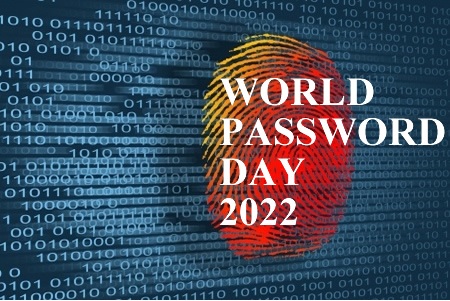Back
World Password Day 2022 – Is your password strong ? Password Tips and Best Practices
- By Elite CIO
 May 06, 2022
May 06, 2022 15
15
 World Password Day 2022 – Is your password strong ? Password Tips and Best Practices.
World Password Day 2022 – Is your password strong ? Password Tips and Best Practices.
In 2013, Intel Security took the initiative to declare the first Thursday in May as the World Password Dat to create awareness on the need for good password security. Thursday, May 5, 2022, is World Password Day with the goal of improving awareness of importance of creating complex and unique passwords and adopting password best practices to keep sensitive information private and confidential.
Considering today your entire life is online, Just think for 2 minute, How strong is your password?
Passwords are not meant to be shared, whether you’re among your friends or relatives.
Passwords were first used to protect accounts against unauthorized access in computing environments in the 1960s. In 1961, researchers at the Massachusetts Institute of Technology (MIT) started using the Compatible Time-Sharing System (CTSS). The system ran on an IBM 709 and users could access the system through a dumb terminal, with passwords used prevent unauthorized access to users’ personal files. The system is widely believed to be the first to use passwords and was also one of the first to experience a password breach.
World Password day is set aside to create awareness for those with an online presence to enjoy private services. Passwords are unique to each person and ensure unauthorized access to digital platforms and accounts. They serve as gatekeepers for digital identities, allowing people to shop online, use internet banking services, enjoy social media, and send and receive information.
Since we are living in a digital era, it is imperative to have a strong password for your own privacy. The security of a password is measured in terms of strength, which is why people normally integrate a mix of characters to make it harder for anyone to guess or memorize and access their accounts.
It is important to have a long, unique, and slightly complex password to protect your valuable information from unauthorized access. Another tactic people use is to change their password after a predetermined amount of time, like a month or two. If you think or suspect your account has been hacked or accessed without your knowledge or permission, you should change it quickly and set up multi-factor authentication.
Password Security Tips
1. Change passwords periodically: Switching up the passwords you created for your different online accounts can reassure you that you’re taking all the necessary steps to keep your accounts and data safe.
2. Never reuse passwords: Recycling old passwords leaves your accounts vulnerable to credential stuffing efforts made by lurking cybercriminals. Try to create unique passwords for each account.
3. Don’t use personal information: Using names, birthdays, addresses, or phone numbers in your password could jeopardizeits effectiveness against cyberattacks.
4. Randomize patterns and sequences: Randomizing the patterns and sequences of letters, numbers, and characters can protect you against password spraying attacks.
5. Never share your passwords: Sharing your passwords with friends or family compromises the Cyber Safety of your personal accounts.
6. Prioritize password length: The longer your password, the more difficult it will be for hackers to guess.
7. Check your password strength: Password strength checkers allow people to validate the effectiveness of the password they created.
8. Use a variety of letters, numbers, and symbols: Hackers are less likely to gain access to accounts with complex passwords incorporating a variety of numbers, letters, and characters
9. Download a trusted password manager: Password managers are an excellent tool for people struggling to ideate and organize their own passwords.
10. Avoid public Wi-Fi: Using public Wi-Fi without a VPN allows hackers to track your online presence and potentially expose your device’s data, including saved credentials.
11. Ensure 2-factor authentication is set up, especially for accounts containing sensitive data